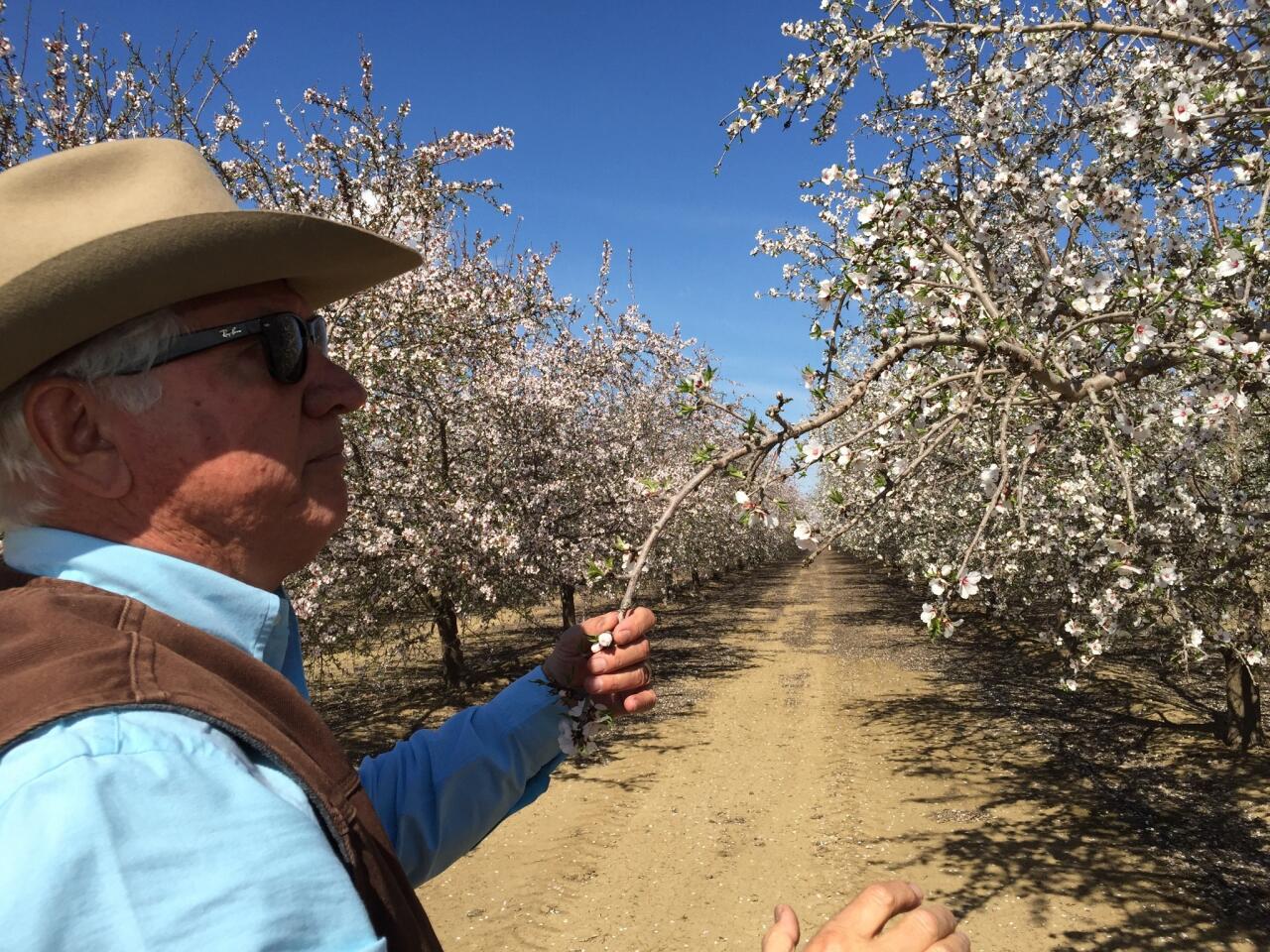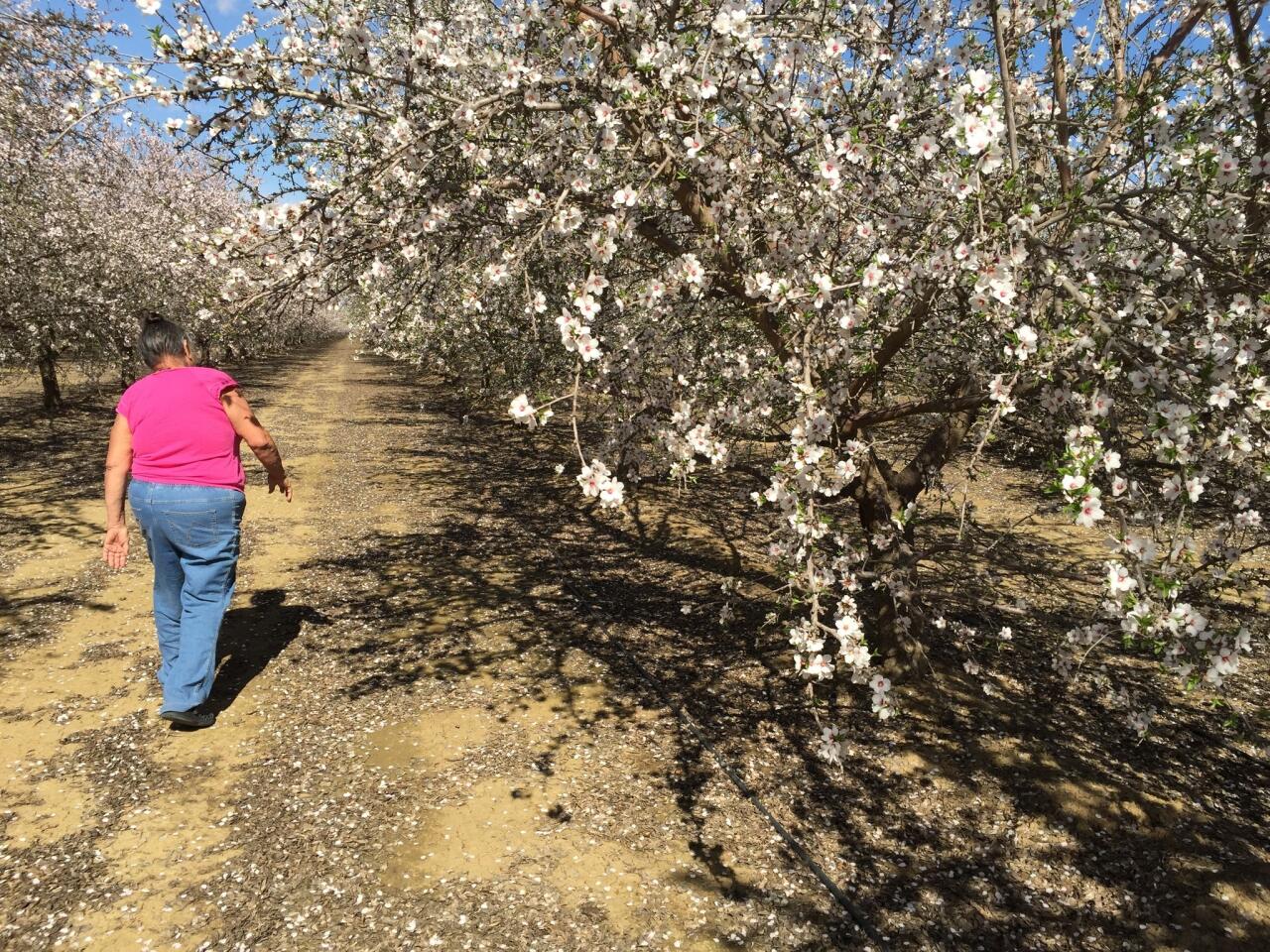
Beekeeper Rosemary Grissom has been renting out her bees to almond growers for more than 30 years. She earns around $170 per hive for the pollinating season.
(Robin Abcarian / Los Angeles Times)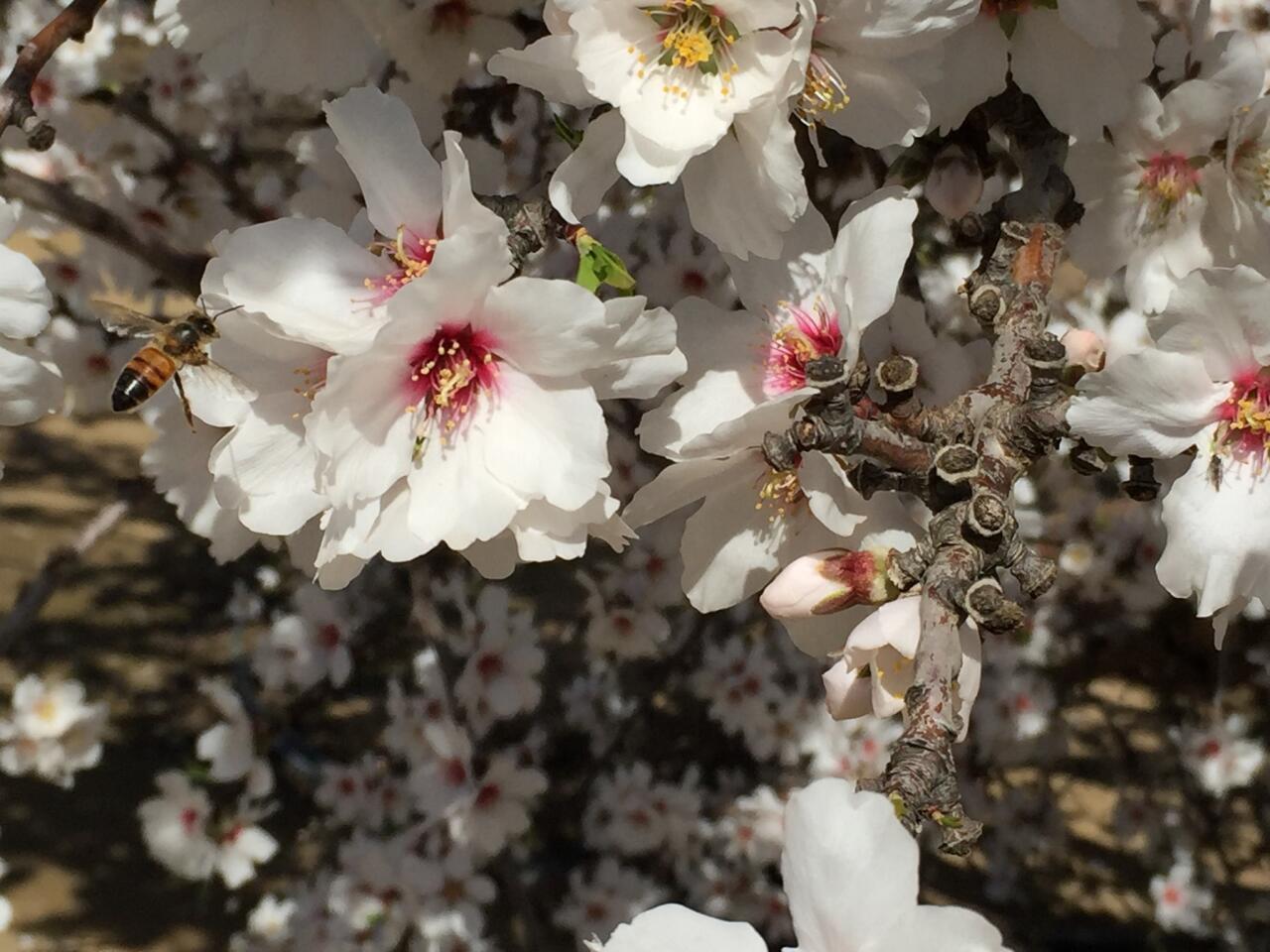
A honeybee approaches its mark, an almond blossom. In February, California’s almond orchards come into bloom. The trees must be pollinated by bees or they will not produce nuts.
(Robin Abcarian / Los Angeles Times)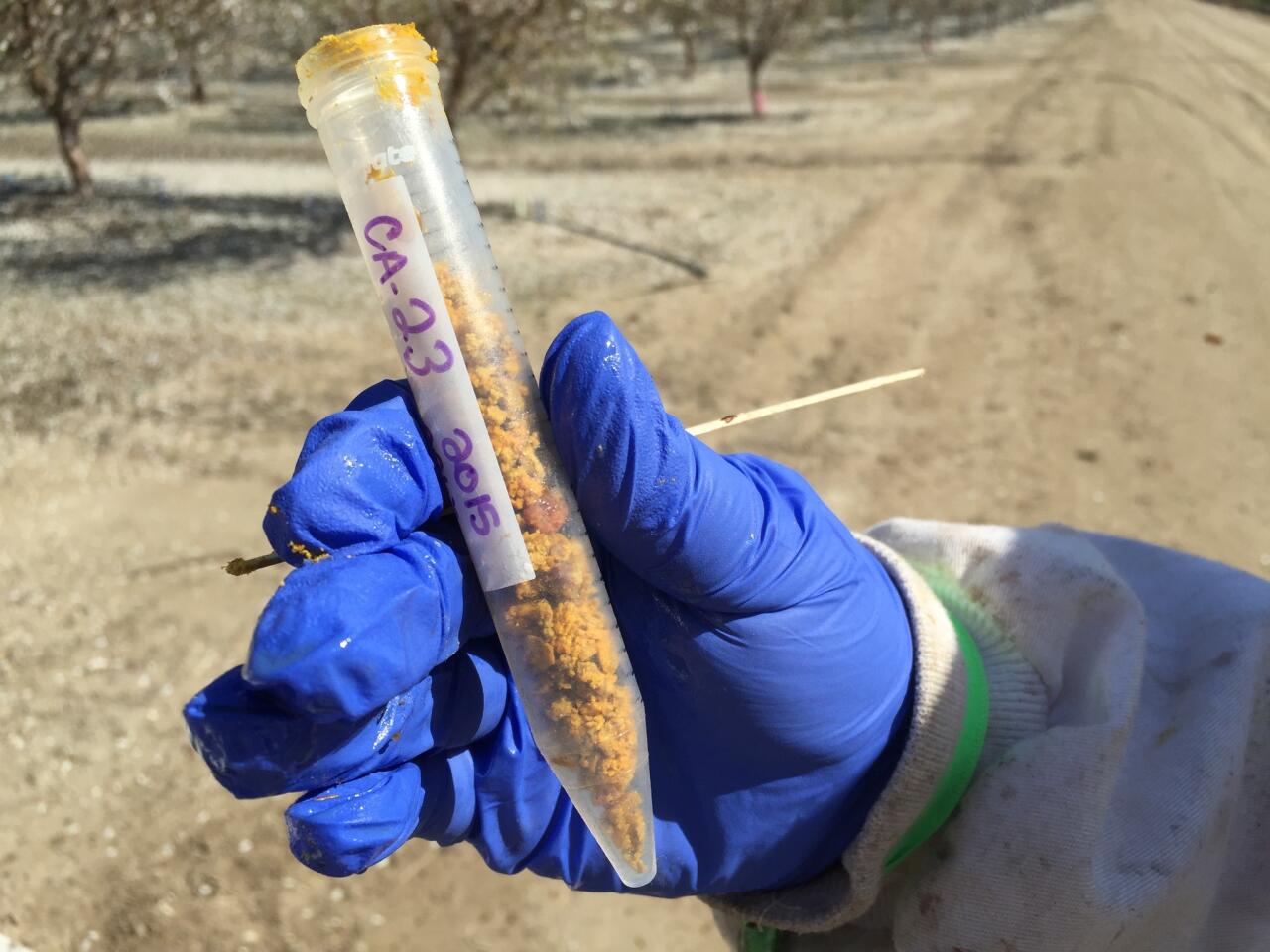
A sample of bee pollen will be sent to a lab in Maryland, where it will be analyzed for pesticides. Researchers suspect a number of causes, such as pesticides, fungicides and viruses, for the failure of bee colonies in recent 10 years.
(Robin Abcarian / Los Angeles Times)Advertisement
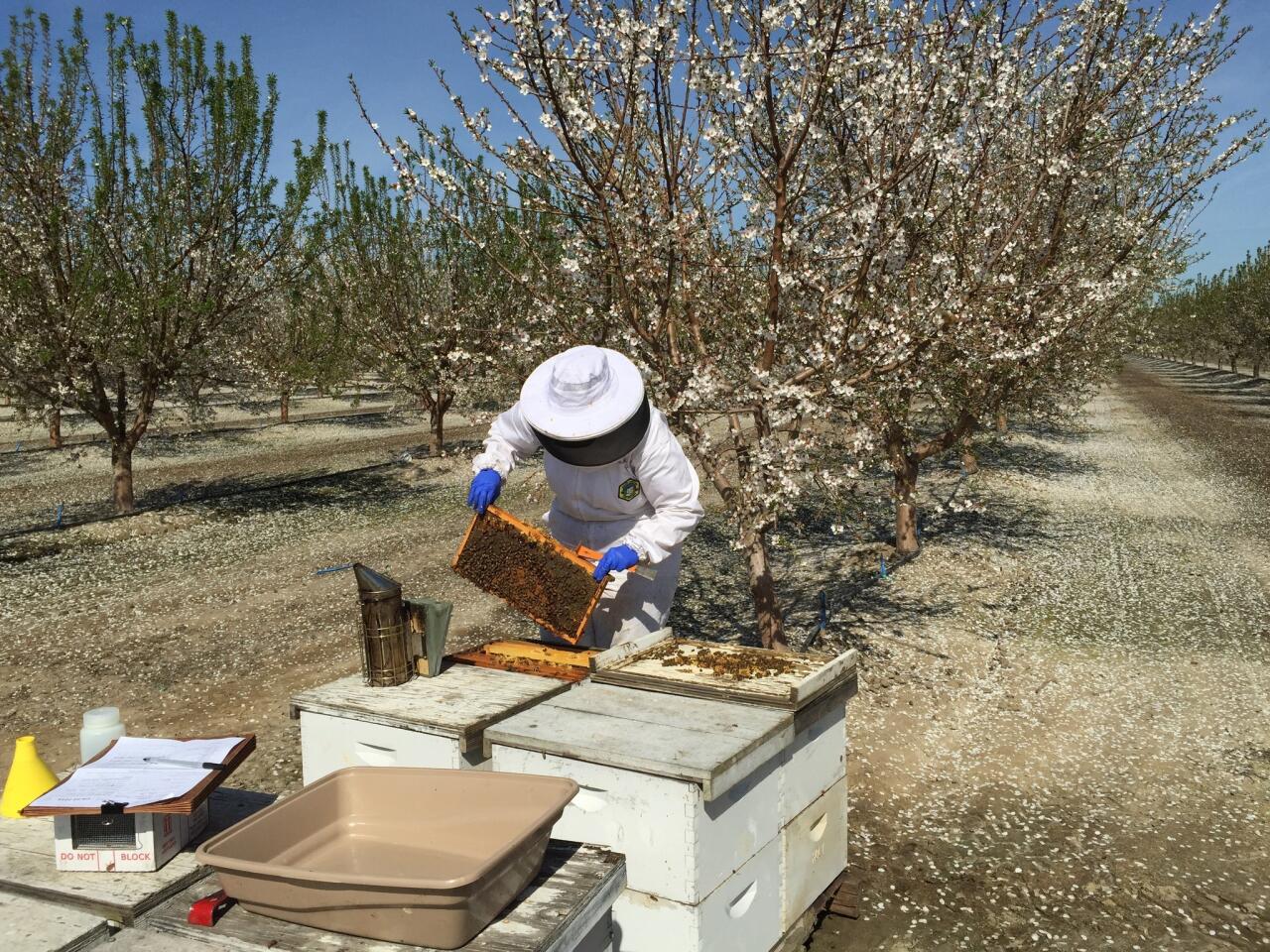
Entomology doctoral student Nathalie Steinhauer tips a frame full of bees into a pan in order to take a live sample for further research.
(Robin Abcarian / Los Angeles Times)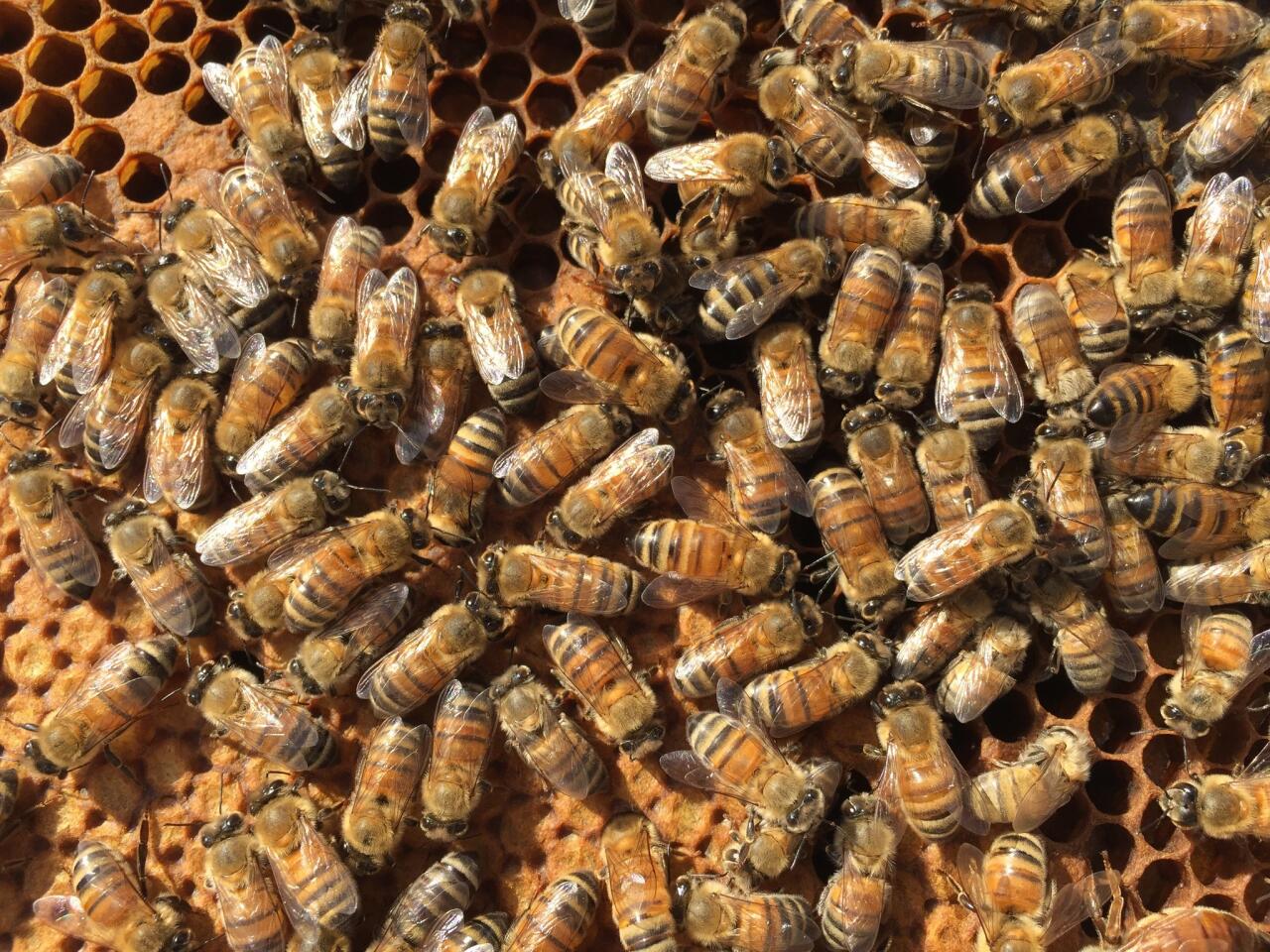
Bees crawl about on a hive, suddenly exposed to daylight.
(Robin Abcarian / Los Angeles Times)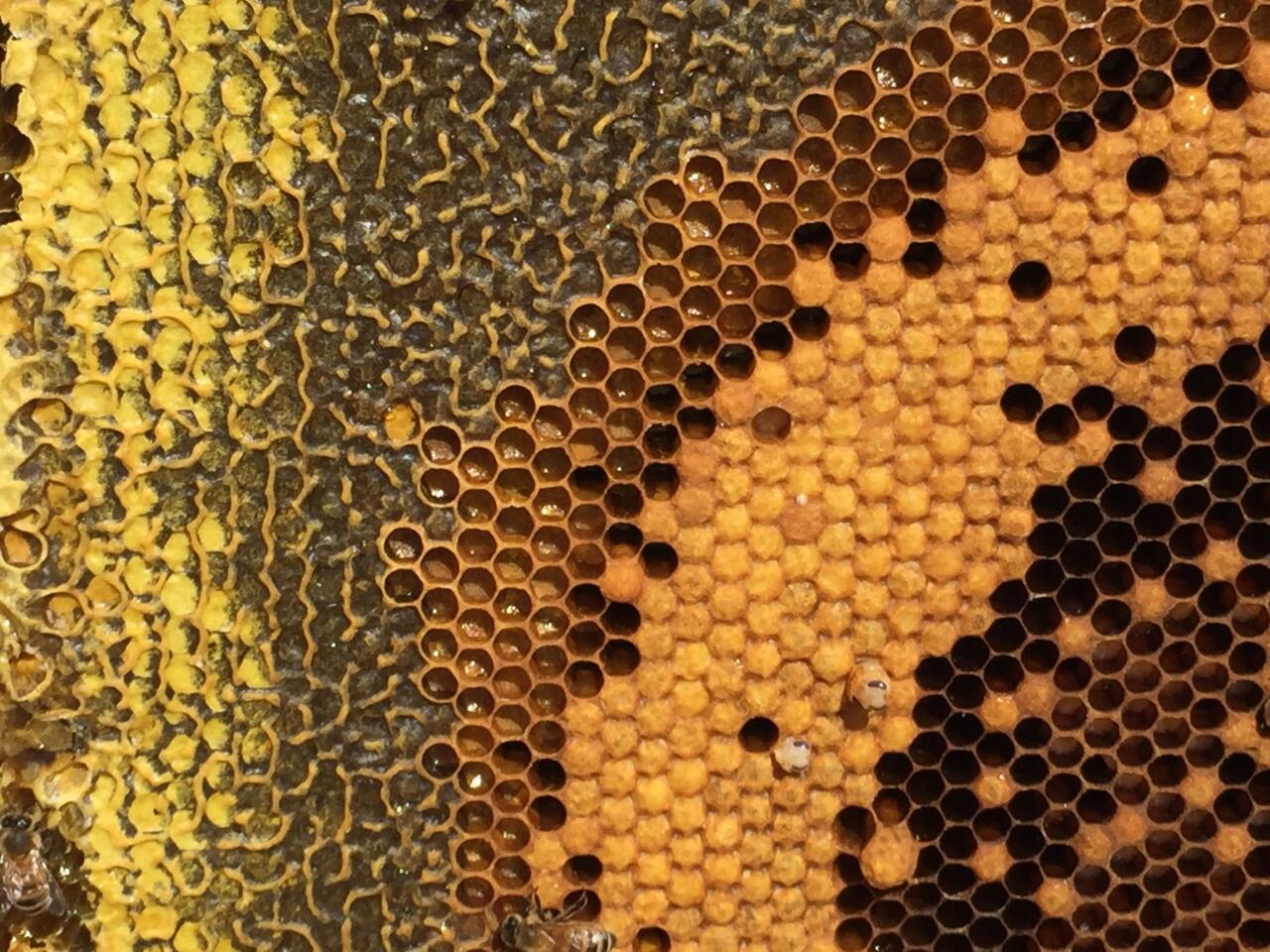
A closeup of a honeycombed frame from a bee hive, with pollen, honey and bee larvae that are walled in until birth. In the lower right corner of the frame, two newborn bees emerge from their cells.
(Robin Abcarian / Los Angeles Times)
University of Maryland entomology graduate students Nathalie Steinhauer, left, and Meghan McConnell take samples of live bees and pollen from an almond orchard south of Bakersfield.
(Robin Abcarian / Los Angeles Times)